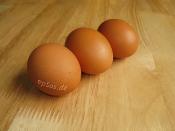LATENT FINGERPRINT DEVELOPMENT TECHNIQUES:
NINHYDRIN AND SUPERGLUE (CYANOACRYLATE)
Fingerprints have been and are to date, the backbone of foreign science. For centuries, fingerprints have been used to prove or disprove the presence of certain suspects and/or to narrow down the case to certain suspects. There are many different methods used to get fingerprints from a variety of sources.
There are visible, plastic and latent kids of prints for a crime scene. Prints made via fingers touching a surface after being in contact with colored material such as grease or blood. Ridge impressions on soft material such as wax or soap are referred to as plastic prints. (Brown) Impressions made via the transfer of body perspiration or oils present on the finger to the surface of an object are referred to as latent print or invisible prints. For this particular paper and lab, the focus is on latent prints.
Latent fingerprints contain many chemicals that seep through the pores.
From the pores in the fingertips, the chemicals are left on the surfaces the fingers have touched. There are techniques for making latent fingerprints visible. They are the physical technique, the chemical technique and the fuming technique. This particular lab focuses on the two latent techniques to develop fingerprints.
The first method is using ninhydrin. The IUPAC name for ninhydrin is 2,2-Dihydroxyindane-1,3-dione. Ninhydrin is used to detect ammonia or primary and secondary amines. Ninhydrin is a chemical that reacts with amino acids to form a purple compound known as Ruhemann's purple and three other products known as amides, amines and carbonates. This method is primarily used on areas where the surfaces are very commonly in contact with the fingers and can usually absorb some of the chemicals as well. Such surfaces include paper, tissue, and clothing.
The ninhydrin solution consists of ninhydrin...


